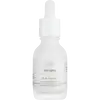What's inside
What's inside
 Key Ingredients
Key Ingredients

 Benefits
Benefits

 Concerns
Concerns

No concerns
 Ingredients Side-by-side
Ingredients Side-by-side

Water
Skin ConditioningGlycerin
HumectantPEG-8 Dimethicone
EmulsifyingTripeptide-1
Skin ConditioningPalmitoyl Tripeptide-1
Skin ConditioningPalmitoyl Tetrapeptide-7
Skin ConditioningPalmitoyl Hexapeptide-12
Skin ConditioningMyristoyl Hexapeptide-16
Skin ConditioningMyristoyl Pentapeptide-17
Skin ConditioningHexanoyl Dipeptide-3 Norleucine Acetate
Skin ConditioningAzelaoyl Bis-Dipeptide-10
Skin ConditioningGlycoproteins
Skin ConditioningPhospholipids
Skin ConditioningAdenosine
Skin ConditioningDipotassium Glycyrrhizate
HumectantArginine
MaskingValine
MaskingGlycine
BufferingAlanine
MaskingGlutamic Acid
HumectantSerine
MaskingThreonine
Yeast Extract
Skin ConditioningIsoleucine
Skin ConditioningProline
Skin ConditioningHistidine
HumectantPhenylalanine
MaskingPCA
HumectantPhytic Acid
Panax Ginseng Root Extract
EmollientSodium PCA
HumectantPsidium Guajava Fruit Extract
AstringentEuterpe Oleracea Fruit Extract
Ahnfeltiopsis Concinna Extract
Skin ConditioningDextran
Hydrolyzed Silk
HumectantLecithin
EmollientGlyceryl Polymethacrylate
C12-16 Pareth-9
EmulsifyingTrideceth-12
EmulsifyingSodium Lactate
BufferingCarbomer
Emulsion StabilisingAspartic Acid
MaskingPolysorbate 20
EmulsifyingButylene Glycol
HumectantCaprylyl Glycol
EmollientPEG-8
HumectantC11-15 Pareth-7
EmulsifyingGuar Hydroxypropyltrimonium Chloride
Skin ConditioningPhytosteryl/Octyldodecyl Lauroyl Glutamate
Skin ConditioningEctoin
Skin ConditioningCitrate Buffer
Trimethylsiloxyamodimethicone
Phenoxyethanol
PreservativeSodium Hydroxide
BufferingEthylhexylglycerin
Skin ConditioningWater, Glycerin, PEG-8 Dimethicone, Tripeptide-1, Palmitoyl Tripeptide-1, Palmitoyl Tetrapeptide-7, Palmitoyl Hexapeptide-12, Myristoyl Hexapeptide-16, Myristoyl Pentapeptide-17, Hexanoyl Dipeptide-3 Norleucine Acetate, Azelaoyl Bis-Dipeptide-10, Glycoproteins, Phospholipids, Adenosine, Dipotassium Glycyrrhizate, Arginine, Valine, Glycine, Alanine, Glutamic Acid, Serine, Threonine, Yeast Extract, Isoleucine, Proline, Histidine, Phenylalanine, PCA, Phytic Acid, Panax Ginseng Root Extract, Sodium PCA, Psidium Guajava Fruit Extract, Euterpe Oleracea Fruit Extract, Ahnfeltiopsis Concinna Extract, Dextran, Hydrolyzed Silk, Lecithin, Glyceryl Polymethacrylate, C12-16 Pareth-9, Trideceth-12, Sodium Lactate, Carbomer, Aspartic Acid, Polysorbate 20, Butylene Glycol, Caprylyl Glycol, PEG-8, C11-15 Pareth-7, Guar Hydroxypropyltrimonium Chloride, Phytosteryl/Octyldodecyl Lauroyl Glutamate, Ectoin, Citrate Buffer, Trimethylsiloxyamodimethicone, Phenoxyethanol, Sodium Hydroxide, Ethylhexylglycerin
Water
Skin ConditioningGlycerin
HumectantHelianthus Annuus Seed Oil
EmollientDicaprylyl Carbonate
EmollientMannitol
HumectantPanthenol
Skin ConditioningPhenoxyethanol
PreservativeCetearyl Olivate
Sorbitan Olivate
EmulsifyingXanthan Gum
EmulsifyingLecithin
EmollientEthylhexylglycerin
Skin ConditioningGellan Gum
Sclerotium Gum
Emulsion StabilisingTocopherol
AntioxidantSodium Hyaluronate
HumectantPantolactone
HumectantAcetyl Tetrapeptide-11
Skin ConditioningCitric Acid
BufferingAcetyl Tetrapeptide-9
Skin ConditioningHexanoyl Dipeptide-3 Norleucine Acetate
Skin ConditioningWater, Glycerin, Helianthus Annuus Seed Oil, Dicaprylyl Carbonate, Mannitol, Panthenol, Phenoxyethanol, Cetearyl Olivate, Sorbitan Olivate, Xanthan Gum, Lecithin, Ethylhexylglycerin, Gellan Gum, Sclerotium Gum, Tocopherol, Sodium Hyaluronate, Pantolactone, Acetyl Tetrapeptide-11, Citric Acid, Acetyl Tetrapeptide-9, Hexanoyl Dipeptide-3 Norleucine Acetate
Ingredients Explained
These ingredients are found in both products.
Ingredients higher up in an ingredient list are typically present in a larger amount.
Ethylhexylglycerin (we can't pronounce this either) is commonly used as a preservative and skin softener. It is derived from glyceryl.
You might see Ethylhexylglycerin often paired with other preservatives such as phenoxyethanol. Ethylhexylglycerin has been found to increase the effectiveness of these other preservatives.
Glycerin is already naturally found in your skin. It helps moisturize and protect your skin.
A study from 2016 found glycerin to be more effective as a humectant than AHAs and hyaluronic acid.
As a humectant, it helps the skin stay hydrated by pulling moisture to your skin. The low molecular weight of glycerin allows it to pull moisture into the deeper layers of your skin.
Hydrated skin improves your skin barrier; Your skin barrier helps protect against irritants and bacteria.
Glycerin has also been found to have antimicrobial and antiviral properties. Due to these properties, glycerin is often used in wound and burn treatments.
In cosmetics, glycerin is usually derived from plants such as soybean or palm. However, it can also be sourced from animals, such as tallow or animal fat.
This ingredient is organic, colorless, odorless, and non-toxic.
Glycerin is the name for this ingredient in American English. British English uses Glycerol/Glycerine.
Learn more about GlycerinHexanoyl Dipeptide-3 Norleucine Acetate is a peptide.
Lecithin is a term for a group of substances found in the cell membranes of plants, animals, and humans. They are made up of mixture of phospholipids.
This ingredient has emollient and emulsifying properties.
As an emollient, lecithen helps soften the skin and creates a barrier to keep moisture in.
As an emulsifier, it also helps prevent water and oil ingredients from separating. Lecithin can also help ingredients be better absorbed by the skin.
This is because the phospholipids in lecithin produce liposomes. Liposomes help other ingredients get through the skin barrier.
Depending on the source of this ingredient, lecithin may not be fungal acne safe. This is because some sources of lecithin come from soybean oil, which may feed the malassezia yeast that feeds fungal acne.
We recommend reaching out to the brand you are purchasing from to inquire about the source of their lecithin.
Some other names for this ingredient include soy lecithin and deoiled soy lecithin.
Learn more about LecithinPhenoxyethanol is a preservative that has germicide, antimicrobial, and aromatic properties. Studies show that phenoxyethanol can prevent microbial growth. By itself, it has a scent that is similar to that of a rose.
It's often used in formulations along with Caprylyl Glycol to preserve the shelf life of products.
Water. It's the most common cosmetic ingredient of all. You'll usually see it at the top of ingredient lists, meaning that it makes up the largest part of the product.
So why is it so popular? Water most often acts as a solvent - this means that it helps dissolve other ingredients into the formulation.
You'll also recognize water as that liquid we all need to stay alive. If you see this, drink a glass of water. Stay hydrated!
Learn more about Water